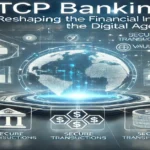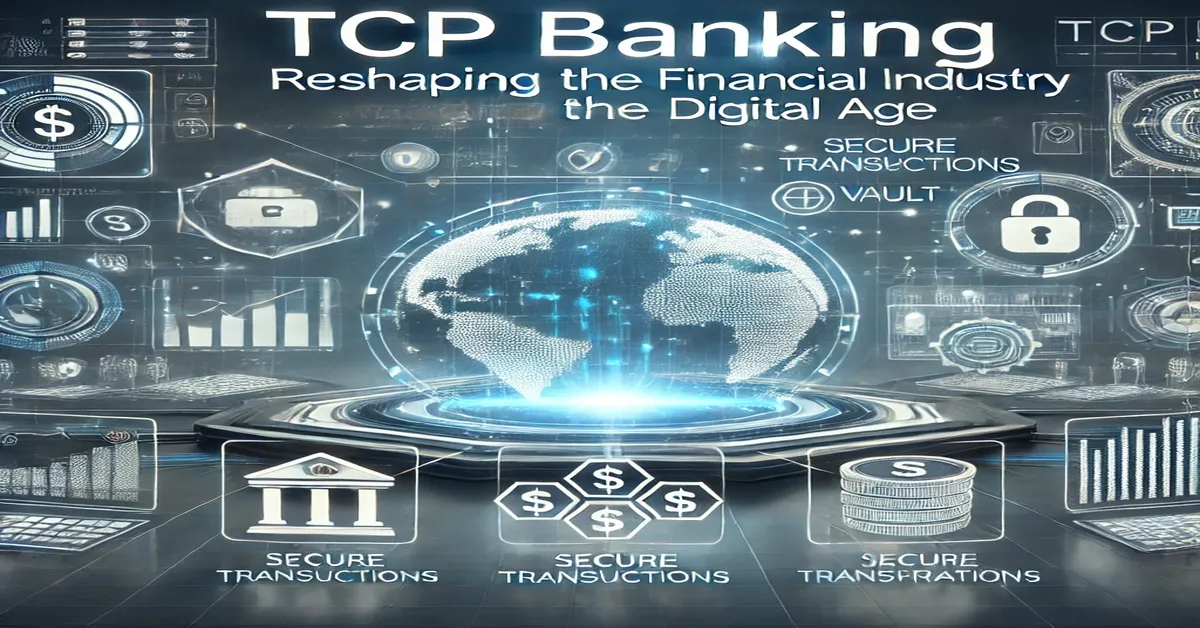In today’s fast-paced technology-driven world, the way we manage our finances has drastically changed. The traditional banking system, once dominated by brick-and-mortar branches, is evolving, thanks to the rapid advancements in digital technology. One of the key developments in this transformation is the rise of TCP banking—a technological protocol that plays a pivotal role in the modernization of banking operations. As digital banks and fintech companies take center stage, TCP banking ensures seamless, secure, and efficient transactions, making it an integral part of the financial ecosystem.
This article dives deep into the concept of TCP banking, how it works, and why it is a game-changer in the digital banking landscape. Whether you’re a tech enthusiast or a curious consumer, understanding the role of TCP in banking will give you a clearer picture of how your money moves in this new financial era.
What is TCP Banking?
To grasp the concept of TCP banking, it’s important to understand what TCP stands for—Transmission Control Protocol. TCP is a foundational technology used to manage the transmission of data across networks. In simple terms, TCP is responsible for ensuring that when you send or receive data (whether it’s a message, file, or transaction), the information is transferred correctly and securely between systems.
In the context of banking, TCP plays a crucial role in enabling secure and reliable communication between the bank’s server and its customers’ devices. Every time you initiate an online banking transaction, TCP ensures that the data moves from one end to the other without errors or disruptions. This seamless communication framework is critical for the smooth operation of online banking services, mobile payments, and digital financial systems.
How TCP Banking Works
TCP banking operates as a part of the underlying infrastructure of digital transactions. When a customer initiates a banking transaction—whether it’s transferring money, making a payment, or checking their balance—TCP ensures that the data is transmitted in an organized, sequential manner. Here’s a simplified breakdown of how it works:
- Data Segmentation: The information is broken down into smaller packets of data. These packets are sent over the network to ensure that the entire transaction is completed in the correct order.
- Packet Transmission: These data packets are transmitted over the internet to the bank’s server, following a route that TCP chooses based on network availability and efficiency.
- Error Checking: TCP performs error checking to make sure that the data packets are correctly transmitted. If any packet is missing or corrupted, TCP requests that the sender resend it. This ensures that no data is lost or misinterpreted during transmission.
- Reassembly of Data: Once all the packets reach their destination, TCP reassembles them into the original message or transaction request. The bank’s server processes this information and performs the requested task.
- Confirmation: After the transaction is processed, a confirmation is sent back to the customer’s device, confirming the successful completion of the transaction.
This entire process happens in a matter of seconds, allowing users to perform banking operations in real-time. The use of TCP banking ensures that online financial transactions are not only quick but also secure, minimizing the risk of fraud or data loss.
The Role of TCP in Digital Banking
With the rise of neobanks (digital-only banks) and online banking platforms, TCP has become a cornerstone technology. Digital banking platforms are designed to provide consumers with the flexibility and convenience of managing their finances from anywhere, at any time. This requires an infrastructure that can handle a high volume of transactions while maintaining security and reliability.
TCP banking plays an integral role in ensuring this by:
- Facilitating Real-Time Transactions: With TCP, digital banks can offer real-time transactions, allowing users to make instant payments, transfer funds, and access their accounts with minimal delay.
- Ensuring Security: Data security is a top concern in the banking industry. TCP provides a secure method of transmitting sensitive information, reducing the risk of hacking or unauthorized access during the transaction process.
- Handling High Traffic: As more people embrace digital banking, the volume of transactions has increased significantly. TCP ensures that banks can handle this high traffic without compromising the speed or reliability of services.
- Enhancing User Experience: TCP’s role in maintaining smooth and error-free communication ensures that users experience minimal disruptions when performing online banking tasks, improving overall customer satisfaction.
Advantages of TCP Banking for Financial Institutions
TCP bankin’g has emerged as a vital tool for financial institutions, especially as they continue to shift towards digital banking models. Here are some of the key advantages:
- Improved Efficiency: TCP allows banks to process transactions faster and more efficiently. This is especially important for financial institutions handling millions of transactions daily. By minimizing data errors and ensuring timely transmission, TCP enhances the overall operational efficiency of banks.
- Cost Savings: Financial institutions benefit from TCP banking by reducing the need for physical branches and manual transaction processing. As more services move online, banks can significantly lower operational costs by leveraging TCP technology for their digital platforms.
- Enhanced Security: Security is paramount in the banking sector, and TCP banking plays a crucial role in protecting sensitive financial data during transmission. TCP’s built-in error-checking mechanisms reduce the risk of fraud, hacking, or data breaches.
- Scalability: As financial institutions expand and grow their customer base, TCP provides the scalability needed to handle increasing transaction volumes. This allows banks to serve a larger number of customers without sacrificing performance or security.
- Real-Time Reporting: TCP banking enables real-time data transmission, allowing banks to provide up-to-the-minute account updates and transaction confirmations. This real-time reporting capability is essential for customers who rely on immediate access to their account information.
The Impact of TCP Banking on Consumers
For consumers, the rise of TCP banking has significantly enhanced the way they interact with their banks. Here’s how TCP banking improves the customer experience:
- Convenience: TCP banking enables users to perform a variety of banking tasks—such as transferring funds, paying bills, and managing accounts—from the comfort of their homes or on the go. This convenience has led to a significant increase in the adoption of online and mobile banking services.
- Speed: One of the most notable benefits of TCP banking is the speed with which transactions are processed. Whether it’s making a payment or checking your account balance, TCP allows for near-instantaneous communication between your device and the bank’s servers, ensuring that transactions are completed quickly.
- Security and Peace of Mind: Consumers value the security provided by TCP banking. Knowing that their financial information is being transmitted securely gives customers peace of mind, especially when performing high-value transactions online.
- 24/7 Access: With TCP banking, customers can access their accounts and perform transactions at any time of the day or night. Unlike traditional banking, which is limited by branch hours, TCP-powered digital banking operates around the clock.
- Personalized Services: Digital banks that use TCP banking often provide personalized services based on a customer’s transaction history and preferences. This allows consumers to receive tailored recommendations for financial products and services, improving their overall banking experience.
TCP Banking vs. Traditional Banking: What Sets Them Apart?
While traditional banking still plays a significant role in the financial world, the introduction of TCP banking has brought about key differences that are reshaping the industry. Here’s how they compare:
- Speed of Transactions: In traditional banking, transactions such as fund transfers or bill payments often take a few days to process. TCP banking, on the other hand, enables real-time processing, allowing transactions to be completed almost instantly.
- Accessibility: Traditional banking requires customers to visit physical branches for certain services, while TCP bankin’g allows users to access all services online. This provides greater flexibility and convenience for customers who may not have easy access to bank branches.
- Cost-Effectiveness: Digital banking powered by TCP reduces the need for physical infrastructure, allowing banks to operate at lower costs. These savings can be passed on to customers in the form of lower fees or better interest rates.
- Security: While both traditional and TCP bankin’g prioritize security, TCP bankin’g has the advantage of using advanced encryption and error-checking mechanisms to protect data during transmission. This reduces the risk of unauthorized access or cyberattacks.
- Customer Experience: TCP bankin’g focuses heavily on delivering a seamless and efficient user experience. With personalized dashboards, instant notifications, and 24/7 accessibility, TCP bankin’g enhances customer satisfaction by providing a superior digital experience.
The Future of TCP Banking
As digital banking continues to evolve, the role of TCP bankin’g will become even more prominent. The integration of new technologies, such as blockchain and artificial intelligence (AI), will further enhance the efficiency and security of TCP-based systems.
One area where TCP bankin’g is expected to expand is in the realm of international transactions. As more people engage in global business and travel, the demand for real-time cross-border payments is increasing. TCP bankin’g has the potential to revolutionize international finance by enabling faster, cheaper, and more secure transactions between countries.
Moreover, with the rise of neobanks and fintech companies, traditional banks will continue to adopt TCP-based technologies to remain competitive. This shift towards digitalization will lead to more innovative banking solutions, such as AI-powered financial advisors, personalized investment portfolios, and automated savings tools—all of which will be powered by the reliable infrastructure that TC’P provides.
Conclusion
TCP bankin’g is a transformative technology that has revolutionized the way we manage our finances. By providing a secure, efficient, and scalable framework for online transactions, TCP bankin’g has become an essential component of the modern financial ecosystem.
As digital banks and fintech companies continue to grow in popularity, TCP bankin’g will play an increasingly important role in ensuring that these platforms can handle high volumes of transactions while maintaining the highest levels of security. For both consumers and financial institutions, TCP bankin’g offers numerous advantages, from real-time transactions to enhanced convenience and security.















